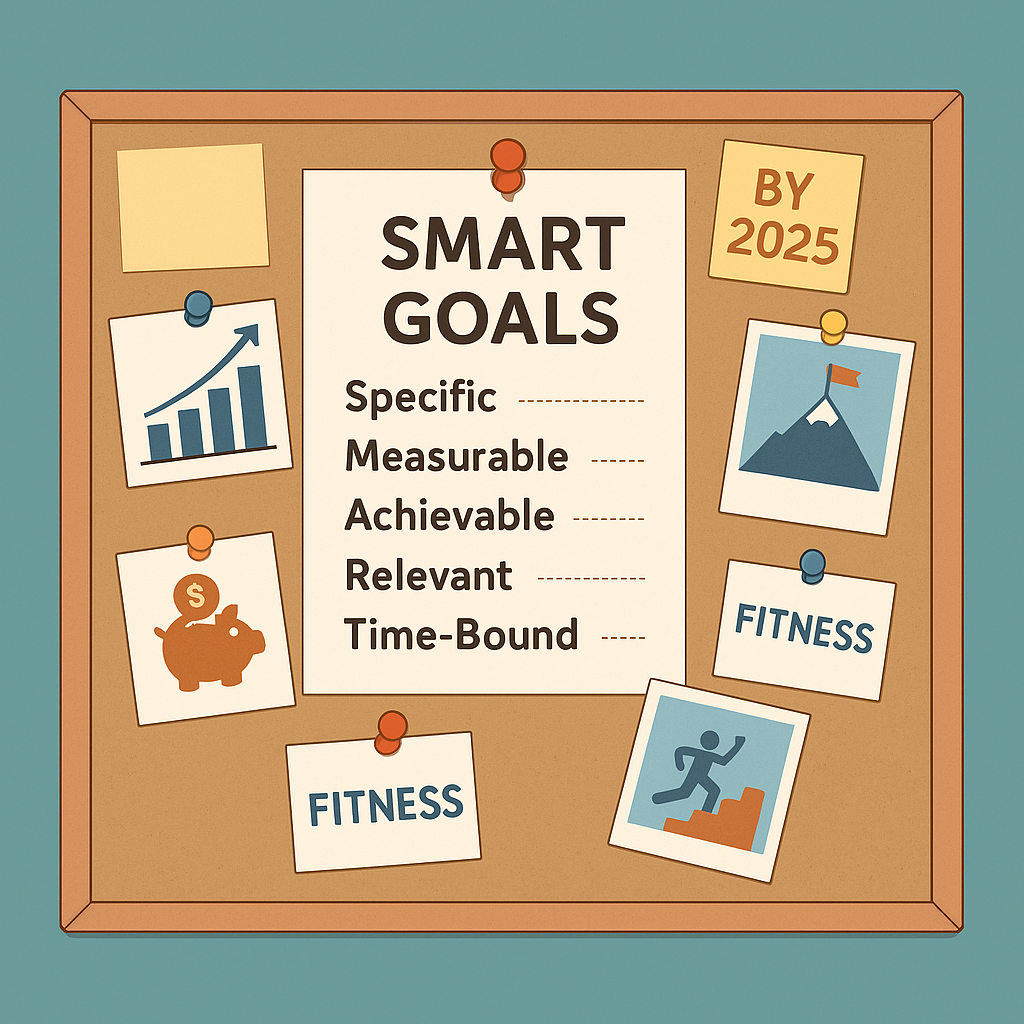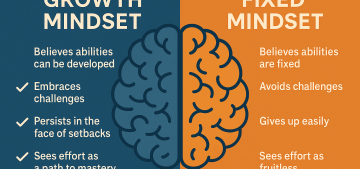Why Most Goals Fail (and How Yours Don’t Have To)
Every New Year, millions of people set ambitious goals — only to abandon them within weeks. According to studies, over 80% of New Year’s resolutions fail by February.
But here’s the truth: the problem isn’t with you — it’s with the process.
Setting goals is an art form that blends psychology, strategy, and self-awareness. The key isn’t just setting them but sticking to them — aligning your goals with your deeper values and daily actions.
Understanding the Psychology Behind Goal Setting
The Dopamine Effect: Why Achieving Feels So Good
When you accomplish a task, your brain releases dopamine, the “feel-good” neurotransmitter. This reward loop motivates you to keep going — but it’s only triggered when your goals are clear and measurable.
How Clarity Shapes Commitment
Vague goals like “get fit” or “be successful” don’t activate the brain’s focus system. In contrast, specific goals — “work out for 30 minutes every morning” — create a visual roadmap the brain can follow.

The SMART Framework: Your Blueprint for Achievable Goals
The SMART framework is a proven formula that turns wishful thinking into structured achievement.
S – Specific: Define Exactly What You Want
Avoid broad goals. Instead of “I want to save money,” say “I will save $500 per month.”
M – Measurable: Track Progress and Celebrate Wins
Numbers make progress visible. Use apps or journals to track every milestone.
A – Achievable: Set Realistic Yet Challenging Targets
Stretch yourself, but stay grounded. Unrealistic goals breed disappointment.
R – Relevant: Align Goals with Your Core Values
If your goal doesn’t resonate emotionally, it won’t last. Align goals with your “why.”
T – Time-Bound: Give Your Goals a Deadline
Deadlines transform dreams into commitments. Add urgency with time frames like “by June 2026.”
7 Powerful Strategies to Make Goals Stick
1. Write Down Your Goals Daily
Repetition trains your subconscious to prioritize your goals.
2. Visualize Your Success
Spend a few minutes each day imagining yourself achieving the goal. Visualization strengthens belief and motivation.
3. Break Big Goals into Small Wins
Divide large goals into weekly or daily micro-actions. Small wins create momentum.
4. Build Systems, Not Just Goals
Focus on habits — if your goal is to run a marathon, your system is daily training.
5. Track Progress and Adjust Course
Use a planner or digital tracker. Adjust strategies, not the vision.
6. Use Accountability Partners or Groups
Find a coach, mentor, or friend who keeps you on track.
7. Celebrate Milestones and Reflect Often
Every small win deserves recognition. It reinforces consistency.

Common Goal-Setting Mistakes to Avoid
Unrealistic expectations – Setting too many goals at once leads to burnout.
Lack of tracking systems – What gets measured, gets managed.
Neglecting emotional motivation – If your “why” is weak, your discipline will fade.
Real-Life Examples: People Who Made Their Goals Stick
Personal Development Icons
James Clear built atomic habits into global success.
Mel Robbins turned the 5-second rule into a global productivity tool.
Tony Robbins emphasizes emotional intensity in achieving goals.
Everyday Heroes
Ordinary people who save for homes, lose weight, or build businesses through small, consistent actions prove that success is a formula, not a fantasy.
Goal Setting Tools and Resources You Can Use
Apps for Tracking and Motivation
Try Todoist, Habitica, or Notion to manage progress digitally.
Goal Journals and Planners
Prefer pen and paper? Use a structured goal journal or habit tracker notebook.

FAQs About Goal Setting
Q1: How many goals should I set at once?
A: Focus on 3–5 at a time for clarity and balance.
Q2: How do I stay motivated when progress slows?
A: Revisit your “why” and adjust your plan, not your goal.
Q3: What if I fail to meet a goal?
A: Reflect, refine, and restart. Failure is feedback.
Q4: How can I make long-term goals feel achievable?
A: Break them into smaller phases with mini-deadlines.
Q5: What’s the best time to review my goals?
A: Weekly reflections work best — adjust every 90 days.
Conclusion: Turn Dreams into Action
Goal setting isn’t about perfection — it’s about progress.
When you align your goals with your values, create systems, and celebrate every step, success becomes inevitable.
Start small, dream big, and remember — goals that stick come from consistency, not intensity.






